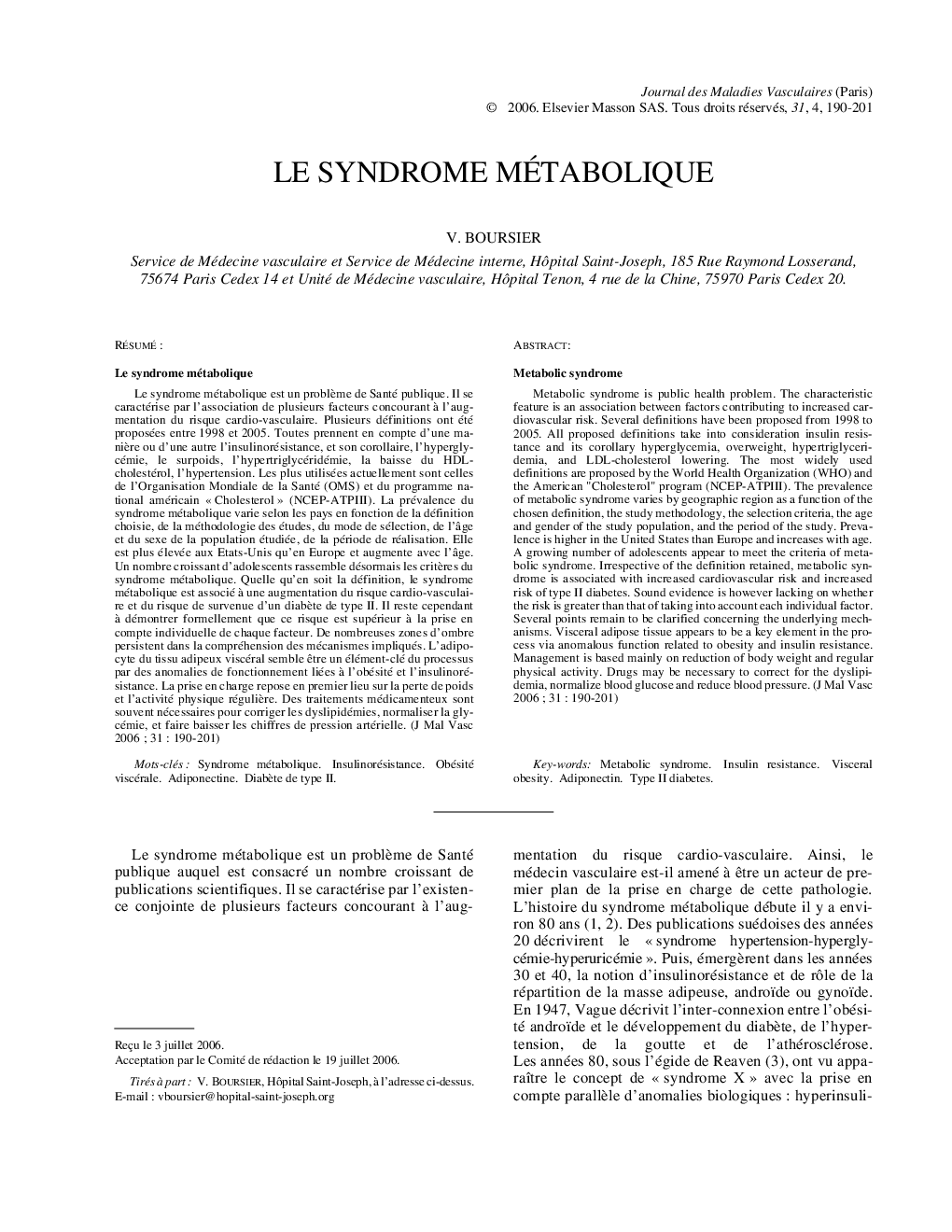| Article ID | Journal | Published Year | Pages | File Type |
|---|---|---|---|---|
| 2976579 | Journal des Maladies Vasculaires | 2006 | 12 Pages |
Abstract
Metabolic syndrome is public health problem. The characteristic feature is an association between factors contributing to increased cardiovascular risk. Several definitions have been proposed from 1998 to 2005. All proposed definitions take into consideration insulin resistance and its corollary hyperglycemia, overweight, hypertriglyceridemia, and LDL-cholesterol lowering. The most widely used definitions are proposed by the World Health Organization (WHO) and the American “Cholesterol” program (NCEP-ATPIII). The prevalence of metabolic syndrome varies by geographic region as a function of the chosen definition, the study methodology, the selection criteria, the age and gender of the study population, and the period of the study. Prevalence is higher in the United States than Europe and increases with age. A growing number of adolescents appear to meet the criteria of metabolic syndrome. Irrespective of the definition retained, metabolic syndrome is associated with increased cardiovascular risk and increased risk of type II diabetes. Sound evidence is however lacking on whether the risk is greater than that of taking into account each individual factor. Several points remain to be clarified concerning the underlying mechanisms. Visceral adipose tissue appears to be a key element in the process via anomalous function related to obesity and insulin resistance. Management is based mainly on reduction of body weight and regular physical activity. Drugs may be necessary to correct for the dyslipidemia, normalize blood glucose and reduce blood pressure. (J Mal Vasc 2006; 31: 190-201).
Keywords
Related Topics
Health Sciences
Medicine and Dentistry
Cardiology and Cardiovascular Medicine
Authors
V. Boursier,
